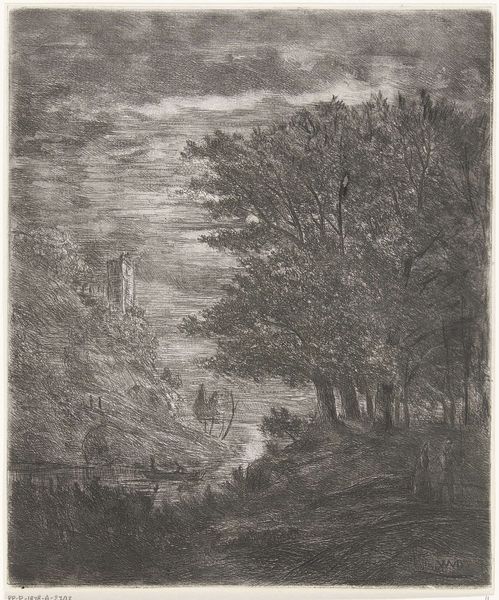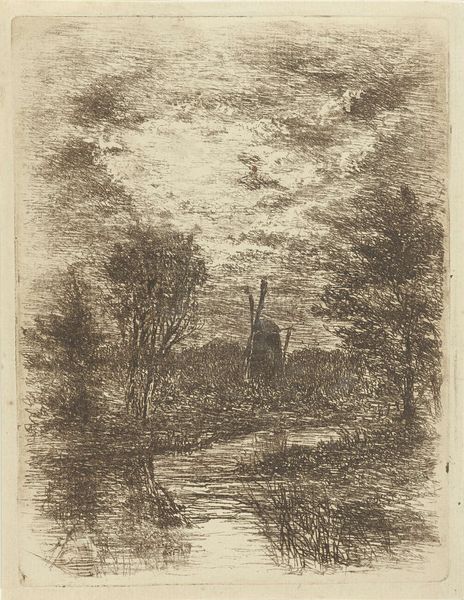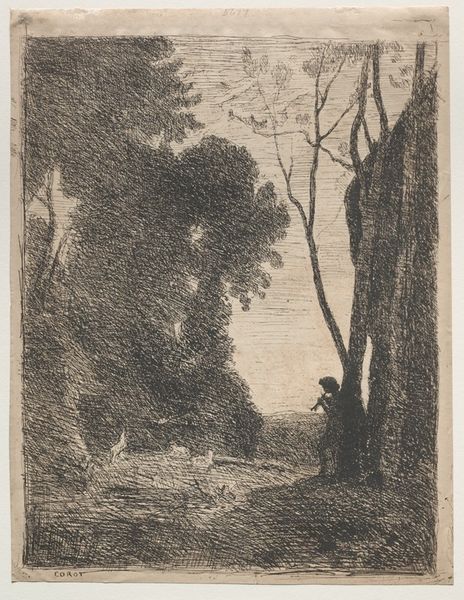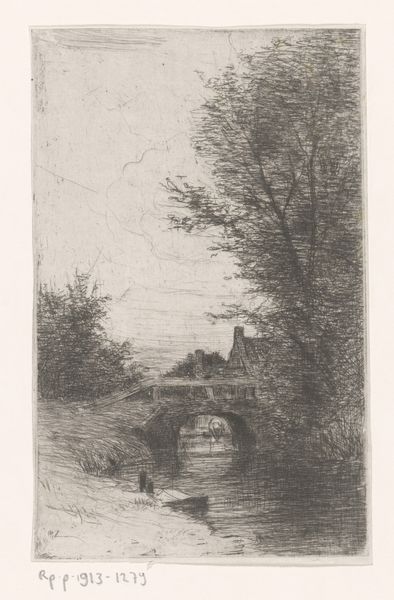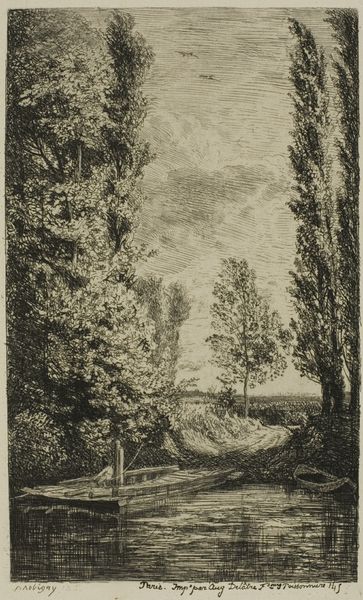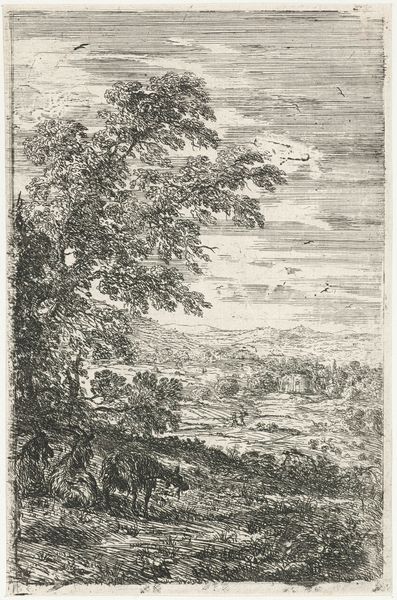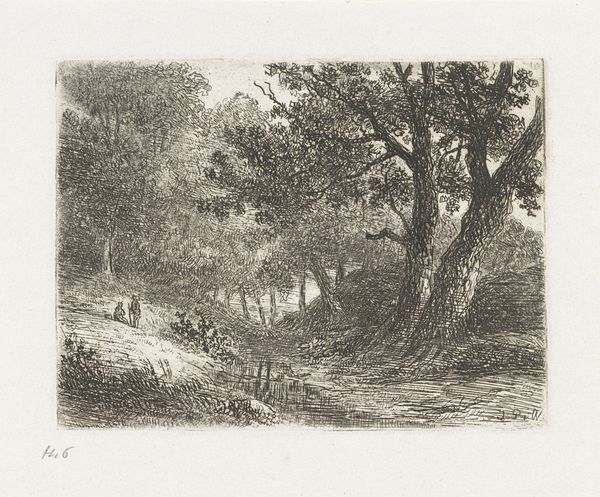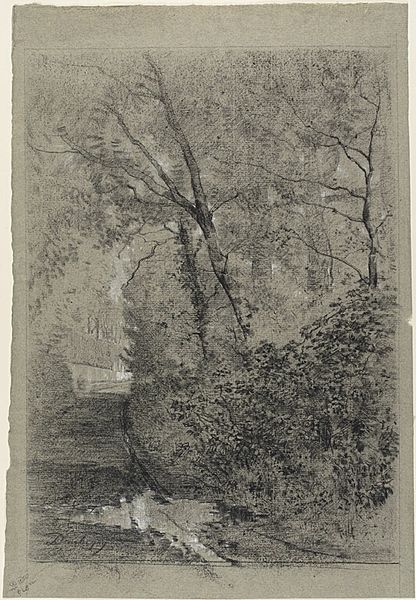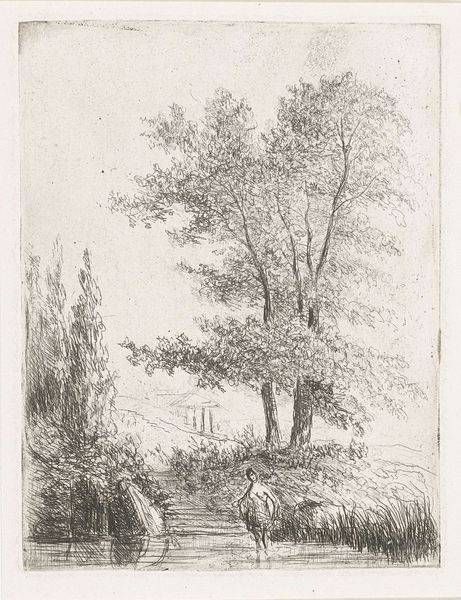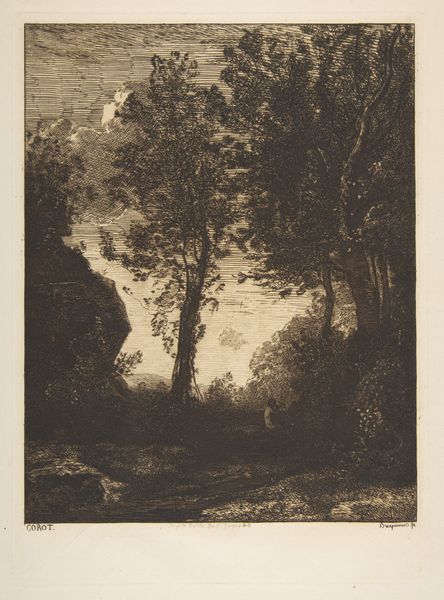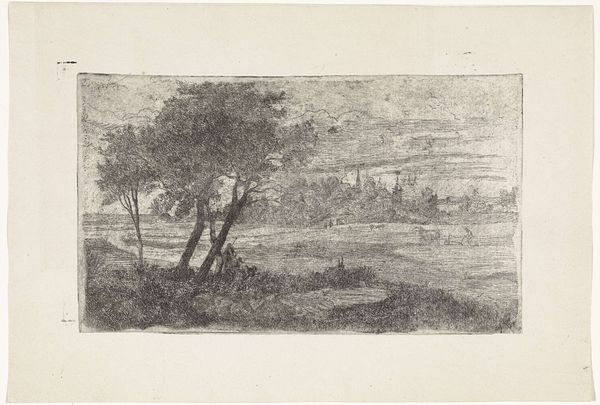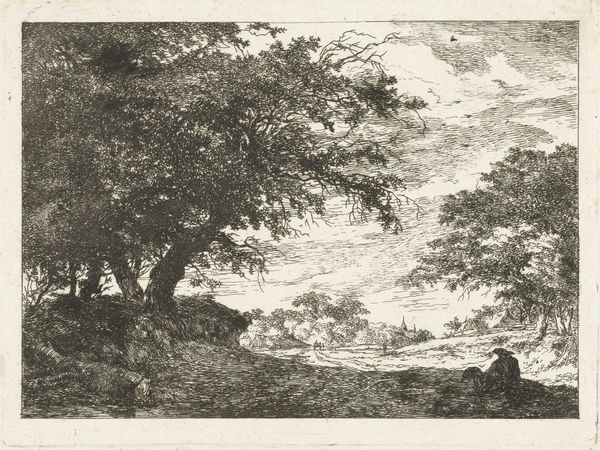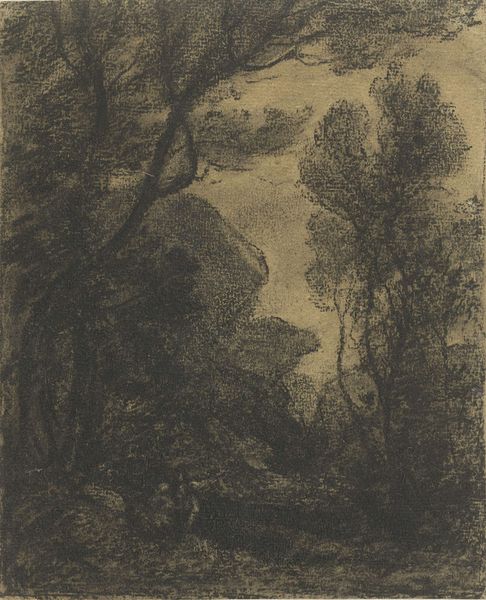
Heuvellandschap met ruïne en bootje op water bij maanlicht 1815 - 1867
0:00
0:00
drawing, pencil
#
drawing
#
landscape
#
pencil drawing
#
romanticism
#
pencil
#
line
Dimensions: height 263 mm, width 219 mm
Copyright: Rijks Museum: Open Domain
Editor: This drawing, "Heuvellandschap met ruïne en bootje op water bij maanlicht" by Willem Matthias Jan van Dielen, crafted between 1815 and 1867 using pencil, has this really interesting delicate, almost haunting feel to it. What strikes you when you look at it? Curator: Well, immediately I consider the societal value placed upon "drawing" versus "painting" at the time of its creation. Pencil, readily available and inexpensive, democratized art production. Van Dielen’s choice speaks to accessibility, possibly intended for a growing middle-class market or perhaps indicative of the artist’s economic constraints. What does this choice of a common medium say about the artist's intended audience and the work’s value? Editor: That’s fascinating; I hadn’t considered the economic and social implications of pencil as a material! So, by using something so readily available, Van Dielen could potentially reach a broader audience... but could this also affect how art critics at the time viewed its overall "value"? Curator: Exactly. Did critics see inherent value, artistic skill transcending medium? Or did pencil denote 'lesser' art, connected to sketching, studies – preliminary labor toward a finished product in ‘higher’ mediums like oils? Notice how van Dielen elevates pencil through detailed line work – blurring divisions between sketch and 'finished' artwork. Editor: That makes so much sense! I see how he is kind of pushing back on that assumed hierarchy of materials through the execution. It makes me think differently about art and labor. Curator: Precisely. And that focus allows us to understand so much more about both this image, and the environment in which it was created.
Comments
No comments
Be the first to comment and join the conversation on the ultimate creative platform.
